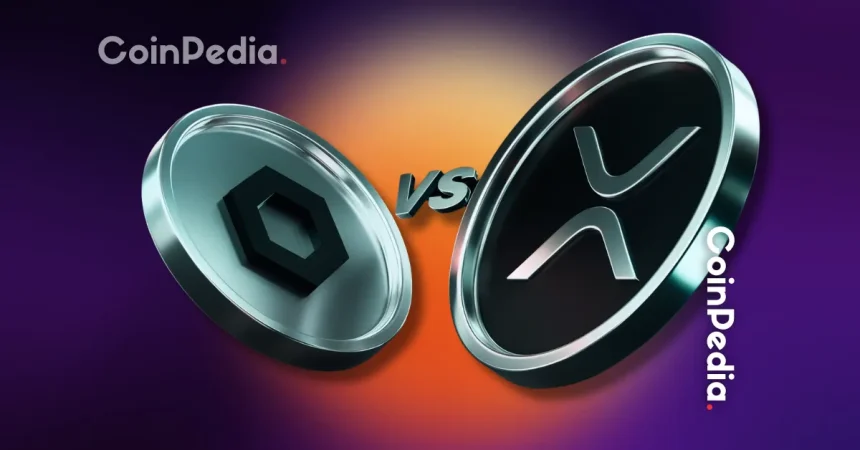The debate over whether Chainlink (LINK) can overtake XRP in market capitalization is heating up. What began as a casual Reddit thread has turned into a broader conversation about utility, adoption, and long-term positioning in the crypto market.
While XRP’s strength has historically been tied to cross-border payments and legal clarity, LINK’s growing role as the backbone of decentralized finance and interoperability may give it the edge.
Ripple (XRP)
XRP’s original value proposition centered on facilitating faster and cheaper international payments. However, the rise of stablecoins and central bank digital currency (CBDC) pilots has diluted that narrative.
Even with potential catalysts like XRP spot ETF approvals in October and experiments with real-world asset (RWA) tokenization on XRPL, critics argue that adoption hasn’t matched the hype. Much of XRP’s recent attention comes from regulatory wins rather than mass utility.
Chainlink (LINK)
Chainlink’s story is different. Rather than focusing on one use case, LINK has become a crucial piece of blockchain infrastructure.
- Oracle Networks: Powering DeFi apps with reliable off-chain data.
- Cross-Chain Interoperability Protocol (CCIP): Enabling seamless communication between blockchains.
- TradFi Integration: Partnerships with institutions like Swift, bridging traditional finance with crypto.
As one Redditor put it, “LINK is out here as the middleware crack dealer for the entire blockchain stack… staking, CCIP, fee capture, partnerships with every chain that matters.”
This multi-ecosystem role positions LINK as a “glue” asset—essential to DeFi, tokenization, and interoperability.
Why Liquidity and Supply Dynamics Boost LINK Over XRP
Another factor working in LINK’s favor is capital rotation. After Bitcoin (BTC) and Ethereum (ETH) complete major runs, liquidity often flows into infrastructure tokens. LINK’s positioning as a utility-driven, ecosystem-wide asset could capture that flow.
Supply is another sticking point:
- XRP: Faces ongoing concerns over centralized control and large token unlocks by Ripple.
- LINK: Introduces staking, fee-capture, and CCIP adoption mechanisms that tighten circulating supply over time.
This combination of supply squeeze and growing utility could shift investor preference toward LINK.
Will LINK Flip XRP?
Not everyone agrees LINK will flip XRP soon. Some argue XRP’s potential in RWA tokenization and institutional adoption could sustain its relevance. Others dismiss XRP as “your uncle still bragging about his Blockbuster card,” while positioning LINK as the future rails of crypto.
The consensus? Short to mid-term, the battle remains open. Long-term, LINK’s multi-chain, multi-industry role may make it inevitable.
XRP may still have catalysts in ETFs and tokenization, but its single-use narrative is losing momentum. Chainlink, meanwhile, is embedding itself as the middleware infrastructure across crypto and traditional finance.
If utility, adoption, and liquidity rotation are the deciding factors, the case for LINK surpassing XRP in market relevance is stronger than ever.
Never Miss a Beat in the Crypto World!
Stay ahead with breaking news, expert analysis, and real-time updates on the latest trends in Bitcoin, altcoins, DeFi, NFTs, and more.
FAQs
LINK powers DeFi, CCIP, and TradFi integration, giving it wider utility than XRP’s payments focus.
XRP benefits from regulatory clarity, ETFs in progress, and RWA tokenization experiments.
Analysts say LINK’s multi-chain role boosts its chances, but XRP’s ETFs may delay a flip.








